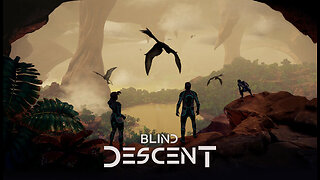Premium Only Content

Interpret Dog Tail Wags: How to Understand Dog's Body Language
In this video, we'll explain the meaning of each dog's tail signs.
The position of a dog's tail can reveal a lot about what that dog is thinking and feeling. The speed of the wag, the pattern of movement, and the breadth of each tail sweep can all give information about a dog's intentions and emotions. In this video, we will teach you how to interpret the language of a dog’s tail.
Tail held high and stiff indicates alertness and the desire to display dominance. When dogs are alert, they stand with their tails raised and ears up. This posture means that they are observing carefully and ready to confront whatever caught their attention. This position could also be a display of dominance. In other words, they are showing their role as the dog who rules the world
Tail held straight out means that the dog is taking in new information and is so far responding neutrally. There could be a new canine in the neighborhood, or at the dog park. Your dog is curious and just doesn’t know what to make of them yet.
Tail held between the legs indicates submission or fear. A tucked tail is a sign that your dog is afraid, scared or uncomfortable. They could be in pain, or afraid of something or someone.
Tail wagging to the left
It may be hard to catch, but a dog will wag their tail to the left if they are suspicious of another dog or a person they don’t trust.
Recent studies suggest that a tail wagging to the left indicates negative feelings, fear or stress. Dogs may show this tail wagging behavior in the presence of an unfamiliar, dominant dog.
Tail wagging to the right
It seems a little bit unbelievable, but recent research suggests that tail wagging to the right indicates positive feelings, or that your dog is relaxed. Oftentimes, dogs show this tail wagging behaviour when they see their owner.
Tail held high and wagging indicates the dog is happy but also alert. The dog is cautiously excited but displaying dominance.
The breadth of each tail sweep and the frequency at which a tail moves add further meaning to canine communication.
Fast, Broad Wag: This indicates a friendly, happy dog who is not threatening anyone. You may have brought them a new treat, or maybe you got the leash out for a walk. This is the closest to the popular concept of the happiness wag, especially if the tail seems to drag the hips with it.
Slow, reluctant wag: A slow wag with the tail at half-mast is less social than most other tail signals. Generally speaking, slow wags with the tail in neither a particularly submissive nor a dominant position might indicate a dog who is feeling anxious, less enthusiastic, or insecure.
Quick, short wag: A slight wag, with each swing of only small breadth, usually happens during greetings, when a dog is feeling tentative.
Very tiny, high-speed movements that give the impression of the tail vibrating are signs the dog is about to run, fight, or attack. If the tail is held high while vibrating, it is most likely an active threat.
It’s important to recognize that different breeds carry their tails at different heights. Some dogs, like Beagles, hold their tails vertically. Others like Greyhounds tuck their tails. All tail positions should be read relative to the average and neutral position where that dog normally holds its tail.
A Short Tail
A stubby or curly tail may make it more difficult for dogs to communicate with their owners and with other dogs.
A key component to reading truncated tails is to look at the base of the tail. They still mimic the same signals as those with long tails, but may not be as easily recognizable.
Interestingly enough, recent studies have shown that dogs with tiny tails are twice as likely to have aggressive encounters as dogs with longer tails
While you can understand a lot about your canine companion from their tail signs, it’s important to observe the entire dog and watch out for other tell-tale signs such as posture, facial expressions and body movements. Watch our other videos to learn more about how to understand your dog better.
-
 LIVE
LIVE
SpartakusLIVE
4 hours agoDuos w/ @GloryJean || #1 Masculine Muscle MASS sears YOUR retinas with MIND BENDING content
666 watching -
 8:07
8:07
MattMorseTV
3 hours ago $0.69 earnedTrump just LOWERED PRICES by 75 PERCENT.
4.77K15 -
 LIVE
LIVE
Misfit Electronic Gaming
6 hours ago $0.09 earned"LIVE" "Blind Descent' +"Dollhouse of Dead" Playtest 10 Followers till we hit 1000! We CAN do this!
105 watching -
 21:53
21:53
Glenn Greenwald
5 hours agoMichael Tracey on the Street: What Do People Think of the Epstein Case?
98.1K52 -
 2:26:28
2:26:28
megimu32
2 hours agoOTS: Board Games Gone Wild! The Loud, Weird & Chaotic Games That Raised Us
4.84K4 -
 LIVE
LIVE
DamnDanieI
3 hours agoKill First, Loot Later – OTG Live
310 watching -
 56:41
56:41
Donald Trump Jr.
7 hours agoLies, Leaks, and Lawfare: Censorship Corruption Exposed | TRIGGERED Ep.263
126K108 -
 1:19:46
1:19:46
Precision Rifle Network
4 hours agoS4E25 Guns & Grub - Rex Is Back, I shot the 6.5PRC finally...
4.47K1 -
 LIVE
LIVE
rhywyn
2 hours agoうつ
40 watching -
 LIVE
LIVE
RyuMuramasa✧
3 hours agoNEW Everdark Sovereign | Elden Ring Nightreign | LIVE Playthrough
25 watching